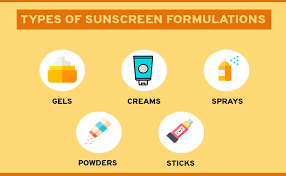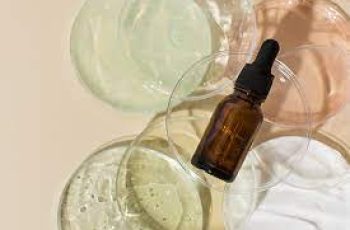
Types of Sunscreen and Its Application
A common misconception about summer and sunscreen is that you need to use sunscreen only during the summer and when you are directly exposed to the sun. In fact, the root cause of most skin problems is not using sunscreen even if you stay at home all year round.
Harmful Effects of UVA and UVB:
Harmful UVA and UVB rays can penetrate the outer layer of the skin and cause inflammation, sunburn and even cell damage. When you use sunscreen, it creates a barrier between your skin and the external harmful environmental elements, acting as a filter and protecting your skin from the harmful effects of the sun.
From premature aging to pigmentation, fine lines, collagen breakdown and skin patches, UV rays usually cause the most damage to your skin. UVA and UVB rays are the main cause of nearly 80% of the skin problems you face. UVB rays can only penetrate the first layer of the skin, the epidermis, while UVA rays can actually penetrate deep into the dermis.
UVB rays cause tanning, while UVA rays reach the second layer of the skin where the living cells are located. 90% of the sun’s rays are UVA rays, which accelerate the aging process of the skin. The dermis contains important elements like capillaries, melanin, nerve endings, collagen, elastin, etc., so it is important to protect this layer of skin. Any damage to this layer will accelerate the appearance of signs of aging; it slows down the healing and regeneration of skin cells, making your skin look dull and dehydrated.
Broad spectrum sunscreens protect you from both types of UV rays. SPF 30+ blocks UV rays for 2 to 3 hours when you are not sweating, protecting your skin from 96% of UV rays. Titanium dioxide is an ingredient that reflects and absorbs sunlight, making it a key ingredient in any sunscreen.
Types of Sunscreens:
There are different types of sunscreens that reflect UV rays to protect your skin from carcinogenic effects. To prevent premature aging, wrinkles, dark spots, fine lines, redness, rashes, pigmentation, and many other skin problems, it is important to know which sunscreen is right for your skin.
Sunscreen to use once a day:
These sunscreens are perfect for those days when you are at the beach and exposed to the harmful sun for long periods of time. These sunscreens usually need to be used once a day and are usually waterproof.
Since this type of sunscreen is a once-a-day sunscreen, it unclogs the pores and provides a thick layer of protection for the skin. This can lead to acne, pimples, blackheads, and other skin problems. You should try not to use this type of sunscreen unless you are exposed to direct sunlight all day.
Waterproof sunscreens:
These sunscreens are specially designed to protect your skin even in the water. Best of all, they are not easily washed off, so you are completely protected from the sun even when playing in the pool or at the beach.
If you use a towel to dry your skin after getting out of the water, these waterproof sunscreens will not protect your skin all day. After wiping with a towel, the product may expose your skin. To avoid the risk, you can reapply these products every time you leave the water and dry your skin.
Anti-aging sunscreens:
While every sunscreen protects your skin from sun damage and slows down the signs of aging, anti-aging sunscreen solutions focus more on protecting your skin from premature aging. These products contain additional anti-aging properties that keep your skin well-hydrated and smooth, thus preventing wrinkles and fine lines.
Since these products have many benefits like slowing down skin aging and protecting your skin from the sun’s harmful rays, the ingredients used in them may be difficult for everyone to understand. To ensure that you are not adding anything harmful to your skin, you should carefully check the complete ingredient list.
Gel Sunscreens:
Gel sunscreens are best for oily skin. When the air is humid and the weather is too hot, gel sunscreens provide a cooling sensation and control sweat and oil. These products are lightweight and actually get easily absorbed into the skin and protect your skin at a cellular level.
These products do not make your skin look oily or greasy. They control sweat and acne. These sunscreens do not make your skin shiny or look dark. You need to reapply these sunscreens every 3 hours to ensure adequate coverage.
Sunscreens:
Cream sunscreens are the most common and stable. They moisturize the skin. Although they are easily absorbed into the skin, it still feels like applying a moisturizer. These products are suitable for dry to sensitive skin.
Oily sunscreens with a creamy texture can be annoying during humid summer weather. The greasy nature of the product may cause you to sweat more than usual. Heavy, creamy formulas can clog pores and cause acne issues. For these reasons, choosing the right texture for your sunscreen can become challenging.
However, if you are going to be exposed to the sun for a long time, it is imperative that you apply some kind of sunscreen. Even if you stay indoors all day, you cannot exclude sunscreen from your morning routine. Even if you are not directly exposed to the sun, harmful UV rays can affect your skin.
Ollie Damn, Sun! with SPF 30++ Sun Protection
Ollie Damn, Sun! is a formula specially developed as a weapon against the sun. It acts as a shield to prevent harmful UVA and UVB rays from penetrating and damaging skin tissue when exposed to the sun.
Not only does it protect your skin from sunburn, it also reduces the appearance of sunburn, discoloration, and dark spots. It also prevents sagging, leathery skin, and wrinkles. It acts as a blue light filter, blocking glare from electronic devices and preventing digital screen time from causing damage to your skin. This product also helps maintain the overall tone and health of your skin.
Key Ingredients
Damn, Sun! contains titanium dioxide, calendula, Himalayan cherry, aloe extract and sesame oil.
Benefits
Titanium dioxide provides sun protection and prevents sun damage.
Sesame oil is a blue light filter for the skin.
Himalayan cherry is rich in vitamin C and has skin whitening benefits.
Aloe vera minimizes tanning and prevents acne.
Calendula soothes and nourishes the skin.
The stable blend of key ingredients in sunscreen actually restores the radiance and health of the skin. It prevents signs of premature skin aging.
The lightweight formula is perfect for fast absorption and cell repair.
Application
After cleansing, toning and applying makeup, pat the product onto the face and neck. Massage gently in outward directions. Apply evenly to the skin before going out in the sun. Reapply every 2-3 hours for maximum protection. With continued use, your skin will improve noticeably.
AULI’S ULTRA NOURISHING, ALL DAY MOISTURIZING BODY LOTION, SPF 30++
Keep your skin hydrated and protected from the sun with this body lotion. To avoid rough, dry skin, apply Ultra Nourish immediately after showering, shaving and exfoliating. This SPF 30++ body lotion is rich in minerals to lock in moisture and nourish the skin, helping to reduce water loss. Ultra Nourish helps prevent sun damage and minimizes tan lines on your body, leaving you with a smooth texture and even skin tone.
KEY INGREDIENTS
Ultra Nourish contains titanium dioxide, almond milk, coconut oil, calamine, aloe vera and herbal extracts.
BENEFITS
Titanium dioxide provides sun protection and prevents skin damage.
Aloe vera prevents water loss from the skin’s surface by locking in moisture.
Coconut oil reduces uneven skin tone and tan lines.
Almond milk has brightening and moisturizing properties.
Calamine has a calming effect on the skin and can prevent rashes.
Application
Apply evenly all over the body daily and massage gently in circular motions after bathing.
Brand Story
Auli is committed to providing effective and affordable natural solutions to skin problems. The team at Auli is passionate about revolutionizing skincare and simplifying terminology. Auli products are effective skin care solutions that help people achieve healthy, naturally glowing skin while treating specific skin concerns. Enriched with active ingredients, Auli has always focused on providing customers with a steady stream of products and skincare awareness. Auli is a complete lifestyle upgrade experience that combines the best of both worlds, modern science and Ayurveda.


